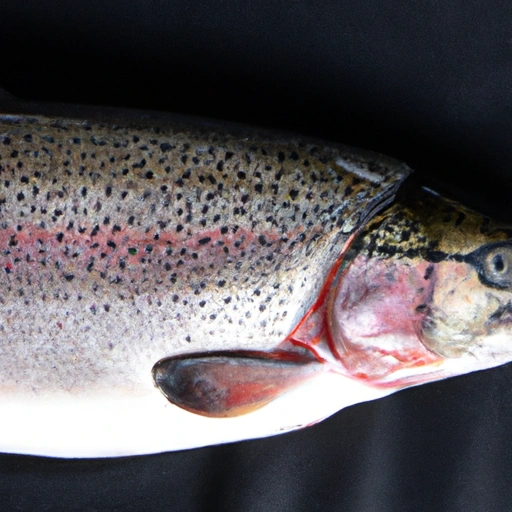Trout
Description

Common uses
Trout is commonly used in a wide array of dishes ranging from simple pan-fried fillets to elaborate stuffed and baked preparations. Its versatility allows it to be incorporated into salads, pastas, and soups, as well as being served as a main course.
Nutritional value
Calories
A typical serving of trout (about 3 ounces or 85 grams cooked) provides roughly 135 calories.
Protein
Trout is an excellent source of high-quality protein, offering about 20 grams per 3-ounce (85-gram) serving.
Fat
Rich in omega-3 fatty acids, a 3-ounce (85-gram) serving of trout contains approximately 5 grams of fat, most of which are heart-healthy unsaturated fats.
Carbohydrates
Trout contains negligible amounts of carbohydrates, making it suitable for low-carb diets.
Vitamins
Trout is a good source of B vitamins, particularly vitamin B12 and niacin.
Minerals
The fish provides essential minerals like phosphorus, selenium, and potassium.
Health benefits
The omega-3 fatty acids found in trout are beneficial for heart health, potentially reducing the risk of heart disease. The rich protein content aids in muscle development and repair, while the B vitamins support energy metabolism and nervous system health. Selenium, an antioxidant mineral present in trout, helps protect the body from oxidative stress.
Potential risks
As with all fish, there is a potential risk of exposure to contaminants such as mercury, though trout, especially farmed trout, typically has lower levels compared to other seafood. It is always advisable to consume a varied diet to minimize potential risks from any single food source.
Common recipes
Trout can be prepared in numerous ways, including smoked trout, trout almondine, trout pâté, and lemon-butter grilled trout.
Cooking methods
Popular cooking methods for trout include grilling, baking, broiling, poaching, and pan-frying. Smoking is also a favored technique to enhance its natural flavors.
Pairing with other ingredients
Trout pairs well with a variety of herbs and seasonings such as dill, parsley, almond, lemon, and garlic. It also complements side dishes like roasted vegetables, rice, and potatoes.
Summary
Trout is a versatile ingredient that enjoys global popularity due to its mild, appealing taste and the ease with which it can be cooked. With its impressive nutritional profile, including high-quality protein and beneficial omega-3 fatty acids, trout is an excellent choice for health-conscious individuals. Whether smoked, baked, or grilled, trout offers delicious possibilities for an array of dishes across different cuisines.